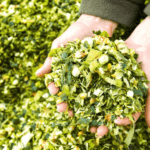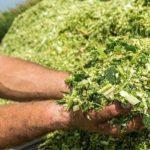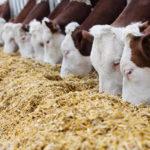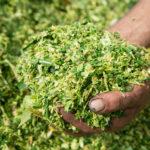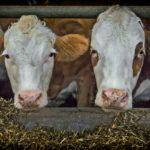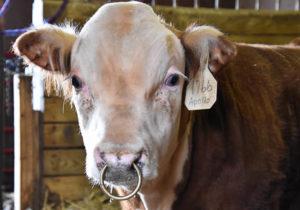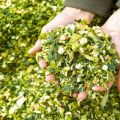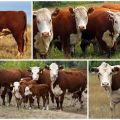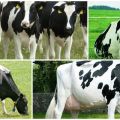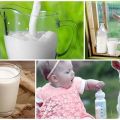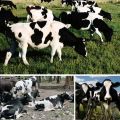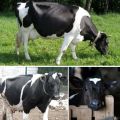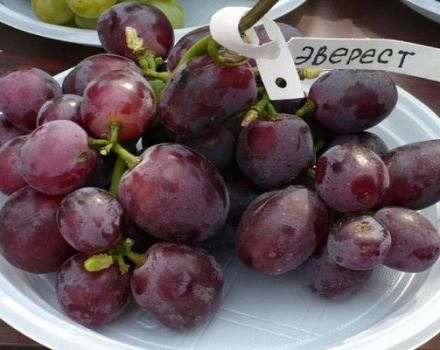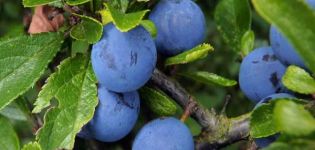The benefits of silage for cows and how to do it right at home, storage
In order for a dairy cow to give a lot of milk, she needs to be given a variety of feed. Food includes high quality hay, succulent feed, grain, compound feed rich in vitamins and minerals. But, if in the summer there are no problems with food, then in the winter there is a need for juicy feed. They can be successfully replaced if sufficient silage for the cows has been prepared in advance.
What is silo
The concept of "silage" hides succulent feed prepared for long-term storage by fermenting the green part of cultivated and some wild plants. Processing takes place without access to air, due to which all nutrients, minerals and vitamins are preserved in the mass.
Silage is an excellent feed for farm animals, especially for dairy cows, with a high nutritional value. It improves the digestion process and promotes better digestion of all other foods used as feed. Silage is fed not only to herbivorous cattle and cows, but also to poultry, which further increases its value for farms and households.
What is it made of
For the manufacture of silage, green parts of agricultural and wild plants are used:
- Corn.
- Sunflower.
- Tops and trimming of vegetables.
- Weeds (except for some plants that can be toxic to animals and poultry).
- Pulp is a product of vegetable oil production, containing up to 22% fat.
- The cake is the most strongly squeezed pulp.
- Pulp is an extracted sugar beet cut, which is a waste of sugar production.
- Stillage - waste from the production of alcohol.
The silo is based on green components, to which other constituent elements are added in certain proportions.
Pros and cons
Silage is an extremely valuable nutritious succulent feed that is very useful for all farm animals and birds, including dairy cows. It has the following positive properties:
- High calorie content.
- Significant content of vitamin C, carotene, organic acids.
- Similarity to fresh grass, even in cold winter seasons.
- Eatable by all herbivorous farm animals and birds.
- The ability to improve digestion.
- Excellent digestion.
Thanks to these characteristics, silage is considered one of the best feeds for dairy cows. It contributes not only to excellent animal health, but also to maintaining high levels of milk yield in the winter with a limited amount of food, especially juicy.

Of the minuses that a silo has, one can name the need to create special silo containers or pits, as well as compliance with the rules for silage and storage of finished products. Peasants and farmers will also need free space to accommodate silos or pits, trenches.
Harvesting technique at home
In order to obtain high-quality silage for cows, it is necessary to correctly calculate the timing of collecting plants for processing, to correctly build a pit or trench, which is much more affordable and easier than buying an expensive silo tower. Plants must be ripe, but not dry, otherwise you will not be able to get enough nutritious product.
Too green plants will give a lot of juice, it will be difficult to compact them tightly, which will lead to air ingress, fermentation, and the development of mold. Dry cuttings are tough and do not have a high nutritional value for cows and cattle.
First of all, this applies to corn silage. Its grain and tops do not ripen at the same time. For maximum quality and nutritional value, the grain should be ripe, and the stems and leaves should be still green and sufficiently juicy. It is believed that silage harvested not in summer, but after the first frost, is best suited for feeding domestic animals and dairy cows in particular.
A silage pit with a capacity of 2 cubic meters is made for one cow. Most often, it has a concrete bottom and the same or brick walls. Above the surface of the earth, sides with a height of 20-30 centimeters are made. They prevent water from entering the silo container. In summer, the pit can be used to store irrigation water, and before loading the silo, it must be dried and the walls whitewashed with lime.
A layer of dry foliage collected from the orchard is placed on the bottom of the pit, then sandwiched with dry hay up to 10 centimeters thick. After that, waste from their own garden and vegetable garden is placed in the pit, including rejected small fruits, tops of root crops and the plants themselves, for example, small carrots and beets that are not suitable for storage and eating. Pumpkin vegetables chopped into pieces, the remains of sunflowers along with baskets, corn stalks and cobs, cabbage and so on are placed there.
The prepared juicy mass is cut right in the pit with pointed shovels with a straight cutting edge. Thanks to this processing, the mass is crushed and compacted. The "pillow" of dry foliage and hay laid on the bottom does not allow damage to the bottom of the silo during such processing.
It is important to compact the silage evenly, especially in corners where air bumps can remain. Corner sections are carefully punched out with wide sticks or rammers. The harvested silage is covered with apple leaves on top, covered with plastic wrap and covered with a layer of earth so that there is no air left under the cover.
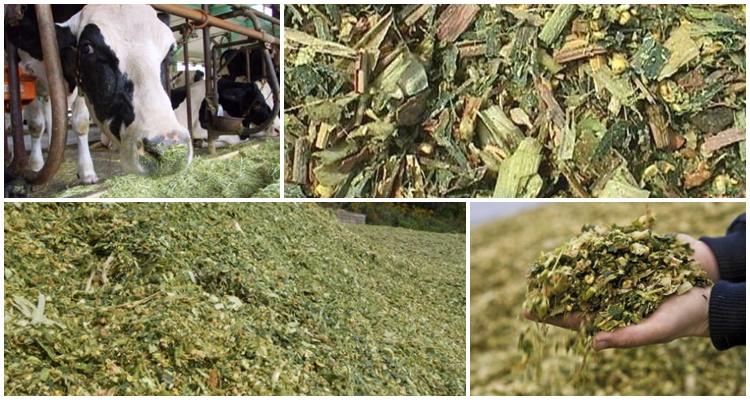
The next step is to create a roof and insulate the silo pit. To do this, it is covered with boards, reinforcing them with stones so that it is not blown away by the wind. Then cover the container with a thick layer of plant residues that cannot be used for livestock feed. From above, the entire structure is once again covered with a durable waterproof material, for example, roofing felt, roofing felt or slate sheets.
Quality control
Approximately 3 weeks after loading plant and fruit residues, the ensiling process lasts, but it is considered that the longer the processing takes, the more useful and nutritious the biomass is obtained.It is impossible to open the product during this period, because the ingress of oxygen or water into the silo will lead to its decay.
At the initial stage of product processing, a gas bubble forms above its surface. This is a signal that the silage process has started, and carbon monoxide is formed in the pit, which is the silage preservative. It is impossible to release this bubble, because it will provoke rotting of the silage. Silage removal speed for cows in winter should be 1-1.5 meters, and in summer - twice as much. Otherwise, it can cause the mass to heat up, leading to a loss of energy.
Good quality silage should be light brown in color and have a pleasant, slightly sour smell. A bad product has a dark color, foul odor and mold inclusions. It cannot be used for feeding animals and even more so for dairy cows. In large enterprises, special quality control is used, including carrying out specific analyzes for the level of acidity, the content of substances, for nutritional characteristics.
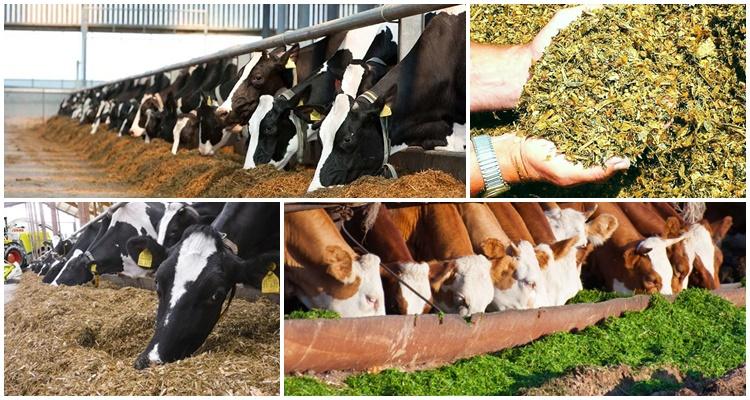
How to feed a cow with silage
Silage is added to the feed of a dairy cow in winter - at the beginning of spring, most often after calving. By this time, her body needs additional nutrients and vitamins, and dry hay is no longer able to meet such requirements. In addition, the cow needs variety in food, and the hay is already tired.
Most often, silage is added once a day, in the middle of the day. In the morning and evening, the animal is given hay. The introduction of juicy feed with a high level of digestibility and nutritional qualities into the diet significantly increases milk yield and has a positive effect on milk quality.
Storage rules
In order for silage to retain its nutritional properties and not deteriorate, it is extremely important to follow these simple rules:
- Protect the product from air and moisture.
- Close the pit tightly after removing the silo for feeding dairy cows.
- Cover the container from atmospheric precipitation.
- Protect product from exposure to ultraviolet radiation.
- Use a film that prevents liquid from evaporating from the mass and at the same time protects against external influences.
- Insulate the container, not allowing the mass to freeze in extreme cold, which will lead to spoilage of the silage.
With a competent approach to creating silage for dairy cows, you can improve the quality of milk and increase its quantity even in winter.
